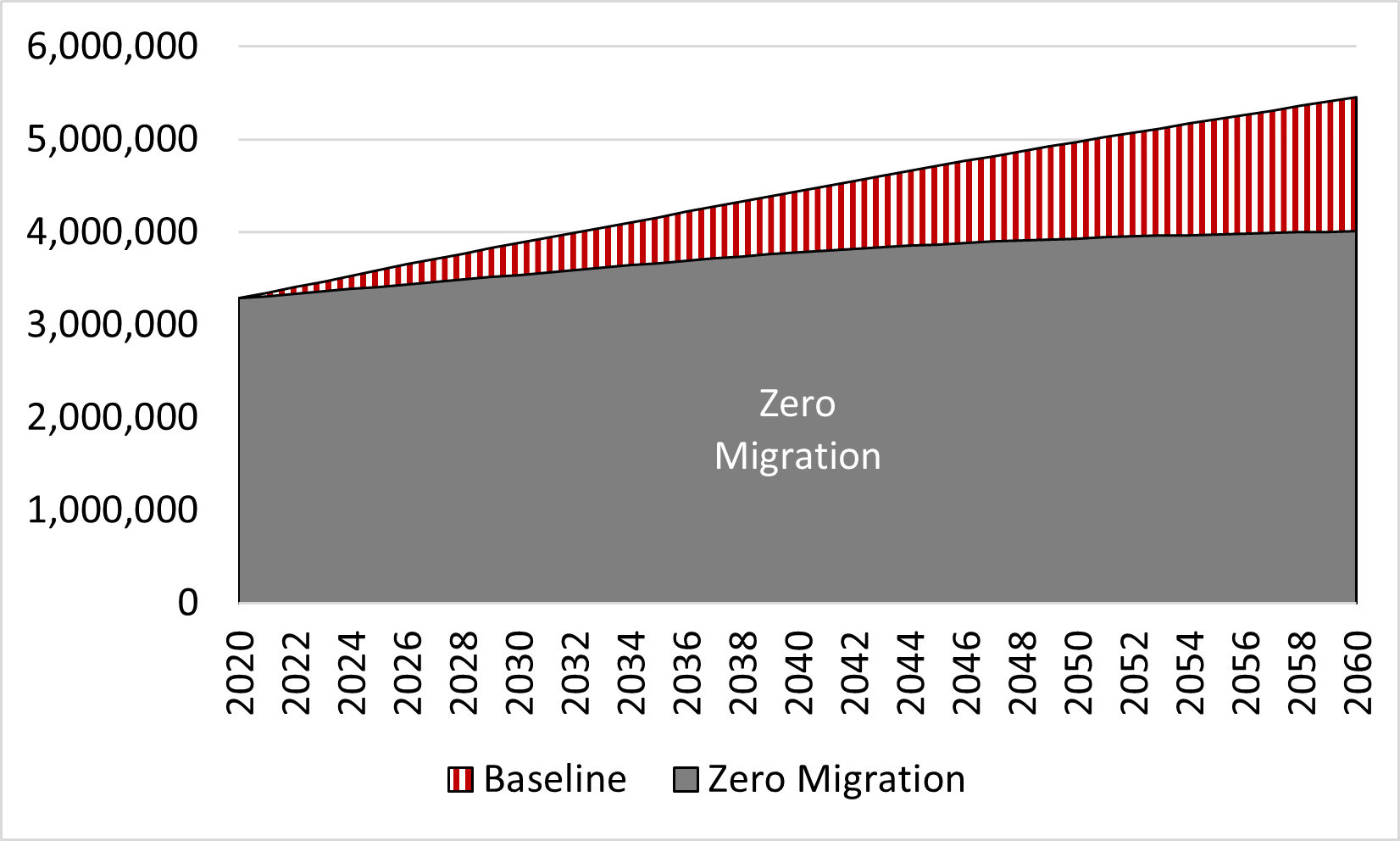Blog Post
Insight: Migration’s Contributions to Population Growth
By: Mike Hollingshaus
Sep 29, 2023 – A new fact sheet explores net migration’s cumulative effects on Utah’s projected population growth – without it, Utah’s population would include 1.4 million fewer residents in 2060. Natural increase (births minus deaths) and net migration are the two sources of growth. Both have been important in Utah’s past, but recently net migration has become more prominent. That trend will likely continue, though our projections maintain positive natural increase in Utah through 2060.
This narrative tells a simple and compelling story, but reality is more complicated. Migration and natural increase are intertwined. One frequently overlooked fact is that today’s migrants are often tomorrow’s parents. A “zero-migration” simulation demonstrates this phenomenon. This simulation is an experiment designed to answer the question: if all Utah migration ceased, what would happen to the future population? Figure 1 shows the basic results from this experiment.
While this scenario is unlikely to occur, and the model relies upon strong assumptions, it illustrates some important points.
-
- Utah’s future growth is highly contingent upon both natural increase and net migration.
-
- Externally-generated growth (net migration) spurs future internally-generated growth (natural increase).
-
- The demographic components of change—births, deaths, and net migration—all influence each other in complicated ways.
Figure 1. Utah Projected Total Population by Net Migration Scenario, 2020-2060`

Source: Kem C. Gardner Policy Institute, 2020–2060 Projections
The “baseline” projection is from the Kem C. Gardner Policy Institute’s Long-term Planning Projections, which forecasts 5.4 million Utahns in 2060. The Gardner Institute considers this to be Utah’s most likely future. If net migration suddenly ceased, including employment-related, retirement, student, missionary, and other migration, the population would be 4 million. While 1.2 million of this would be from the migrants themselves, an additional 200,000 would result from foregone natural increase those migrants are expected to contribute. Instead of growing at an average annual rate of 1.3%, Utah would only grow by 0.5% annually.
The fact sheet also demonstrates how net migration affects other demographic characteristics. For example, Utah’s net migration tends to slow population aging. The median age would rise even higher than currently projected for 2060: 44.1 compared 42.1, a difference of 2 years, because migrants tend to be of childbearing age.
Figure 2. Utah Median Age by Net Migration Scenario, 2060
Source: Kem C. Gardner Policy Institute, 2020–2060 Projections
The future is not set; policies, actions, and random chance will alter its course. This is why the Gardner Institute has also produced projected high and low variants based on different growth assumptions. We must plan for the future, and current trends indicate Utah’s many amenities, including favorable employment opportunities, will continue to attract migrants from domestic and international sources to fuel growth.
Mike Hollingshaus is a senior demographer at the Kem C. Gardner Policy Institute.






